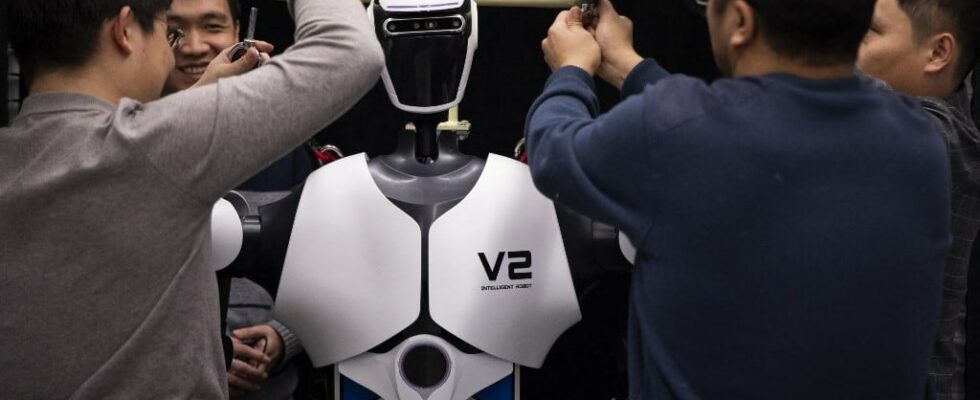It’s a correction that sums up the importance of the issues. Just a few months ago, Goldman Sachs estimated that the humanoid robot market would be worth $6 billion within a decade. He now puts it at 38 billion by 2035. The fight to dominate what is emerging as a major industrial sector is raging between the United States and China. Even if marketing to the general public as a domestic assistant is promoted by manufacturers, humanoid robotics will firstly be a response to the general shortage of labor in the manufacturing industry, and particularly in the automobile.
Industrial robots are already widely deployed in factories. But these imposing machines are not mobile and take some time to be reconfigured for new tasks. At the same time, automobile manufacturers are experiencing an acceleration in the rate of release of ever more personalized vehicles, of which the electronic part – and therefore the precision tasks – is enriched. Rapid reconfiguration of production lines becomes essential. This is where versatile humanoid robots come in, which are self-learning, mobile and capable of cooperating with each other or with humans.
Automotive factories are also excellent testing environments. Tasks such as handling, sorting, welding or assembly are perfect activities to help robots accumulate training data. This is the strategy of Tesla and its humanoid Optimus which is today trained in the group’s factories. The first commercial partnership of the American Figure AI, which raised $700 million in less than three years of existence, was signed with the BMW factory in South Carolina. Apptronik sends its bipedal robot Apollo to Mercedes-Benz facilities in Hungary. Japanese Toyota is investing in its R&D around humanoid robots and the South Korean Hyundai bought the famous company Boston Dynamics from Alphabet, Google’s parent company, in 2022. The Chinese robot manufacturer UBTech, based in Shenzhen, has already received orders from the part of BYD. Finally, XPeng, one of the three largest Chinese electric car manufacturers, has revealed in November his humanoid Iron.
Speed record
Aware of the sovereignty issues posed by this influx of machines into factories, China’s Ministry of Industry and Information Technology proclaimed last year that China aims to become the world’s leading producer of humanoid robots. peak performance by 2027, through the Action Plan for Embodied Intelligent Robots. The members of the latter must imitate the joint and muscular movements of the human body and are measured in degrees of freedom (DOF in English, for degrees of freedom), or the number of independently controllable joints. Recently, Fourier, a company specializing in medical and rehabilitation robots based in Shanghai, launched a model with 12 DOF hands. Tesla’s Optimus was presented with hands to 22 DOF, approaching the 27 of the human hand. Coordination, balance and posture require complex autonomous piloting systems. Finally, the artificial intelligence that powers these robots must be capable of processing and responding in real time to massive quantities of information captured by images or lasers.
Last month, a Chinese robot, Star1, equipped with running shoes, broke the speed record at 13 kilometers per hour, formerly held by the humanoid H1 from Unitree Robotics, a company based in Hangzhou and known for its quadrupeds. A report of the Sino-US Economic and Security Commission reveals that Chinese companies are on par with the United States when it comes to the physical performance of robots, but that they are behind in sensors and data processing.
Access to the latest generation chips will be crucial. Nvidia has just presented its chip Jetson Orin Nano Superoptimized for local processing in a robot: 70 trillion operations per second for a consumption of 25 watts. Will it be restricted to sales to Chinese entities? Elon Musk, for his part, has just met the president of the Taiwanese founder TSMC to manufacture his Dojo chips used for autonomous driving of Teslas. They will be the future brains of its Optimus robots.
Robin Rivaton is Managing Director of Stonal and member of the Scientific Council of the Foundation for Political Innovation (Fondapol)
.
